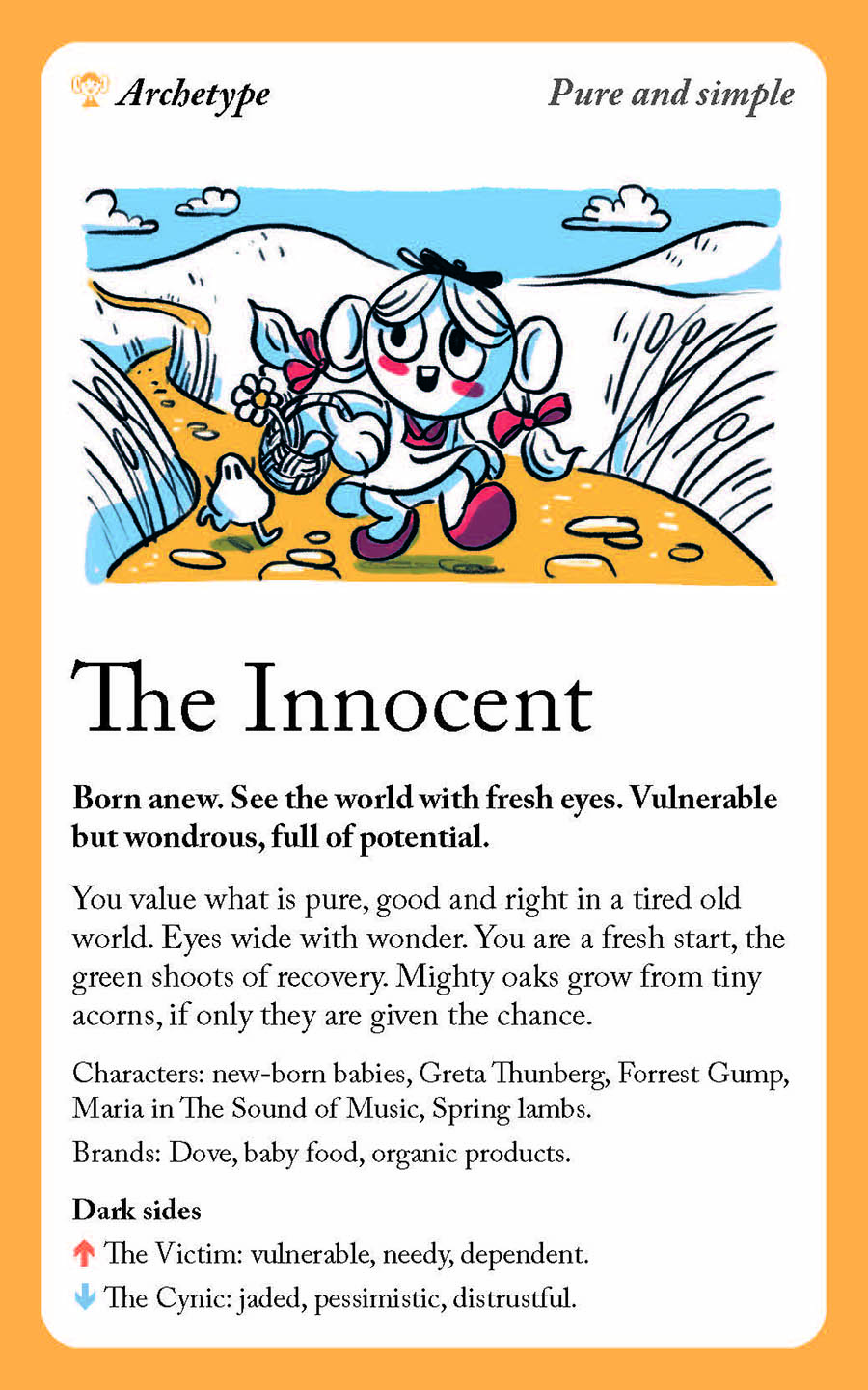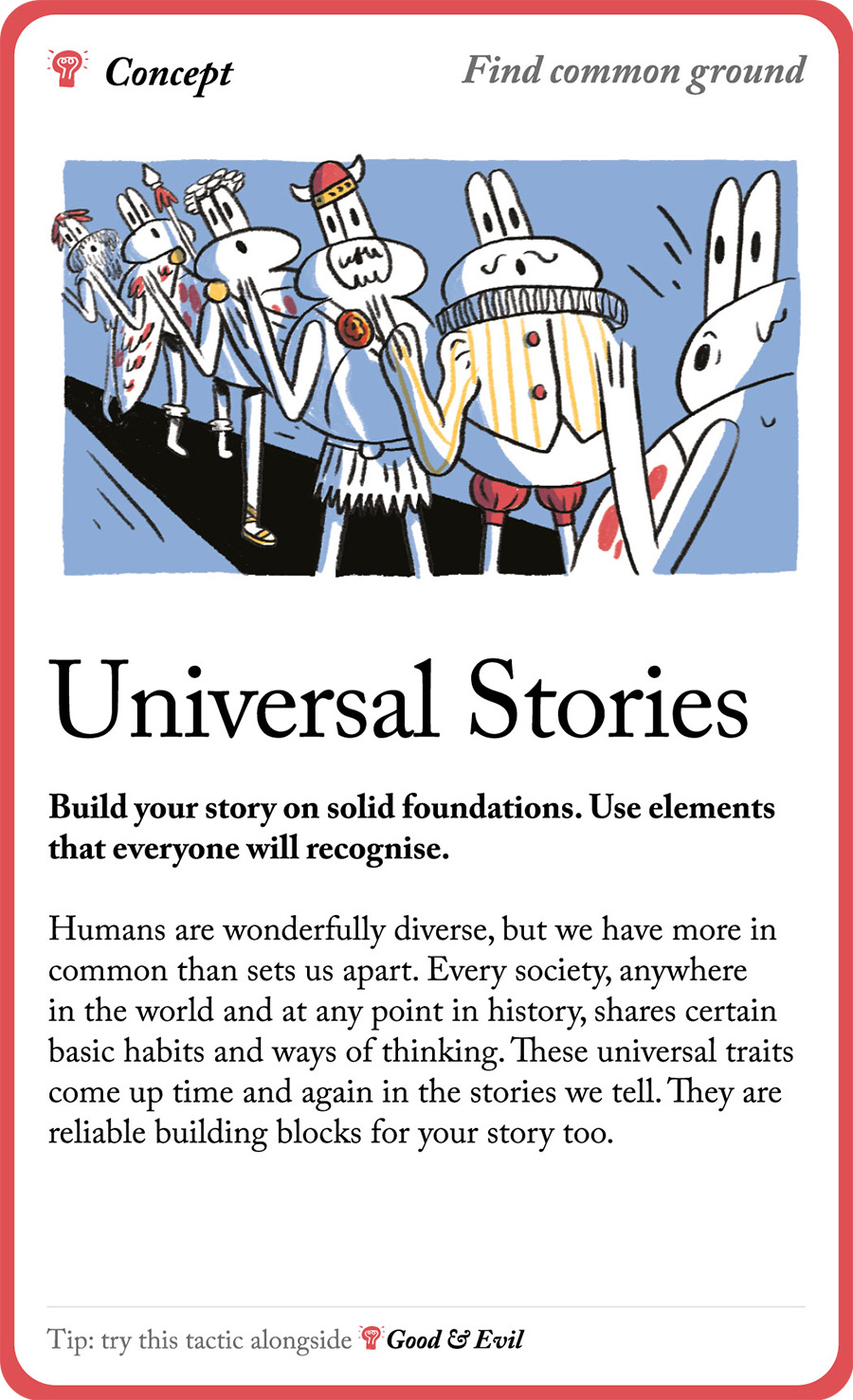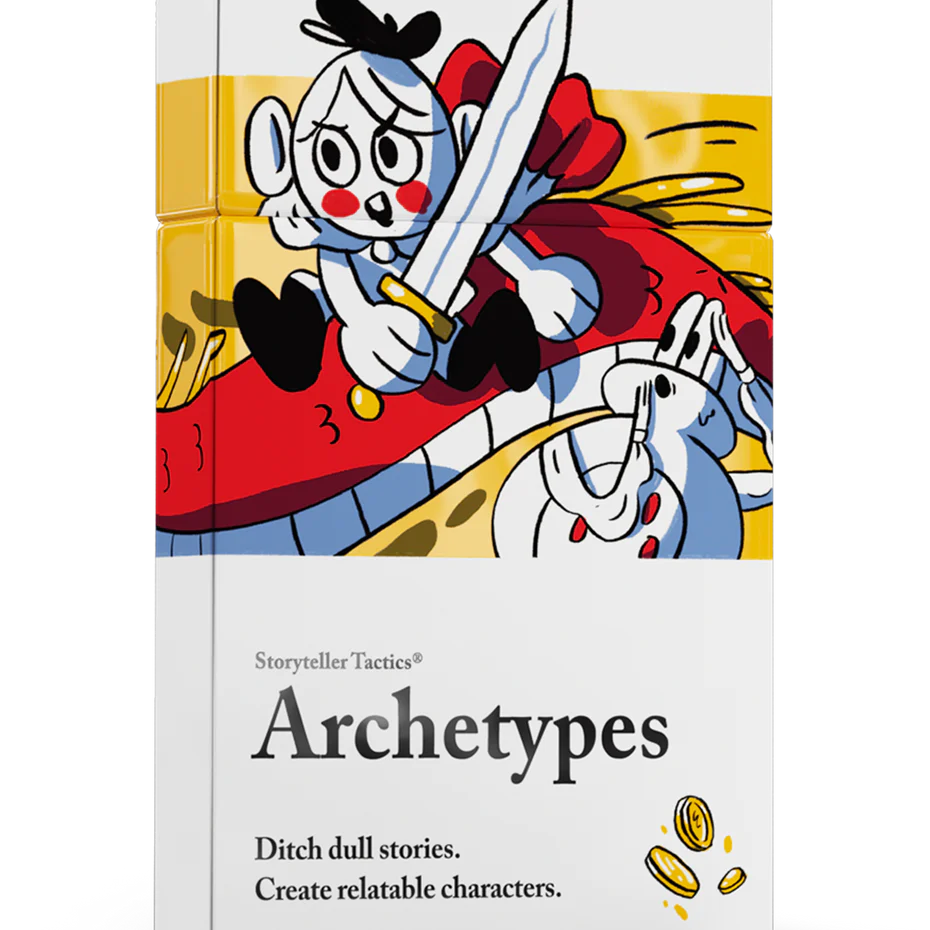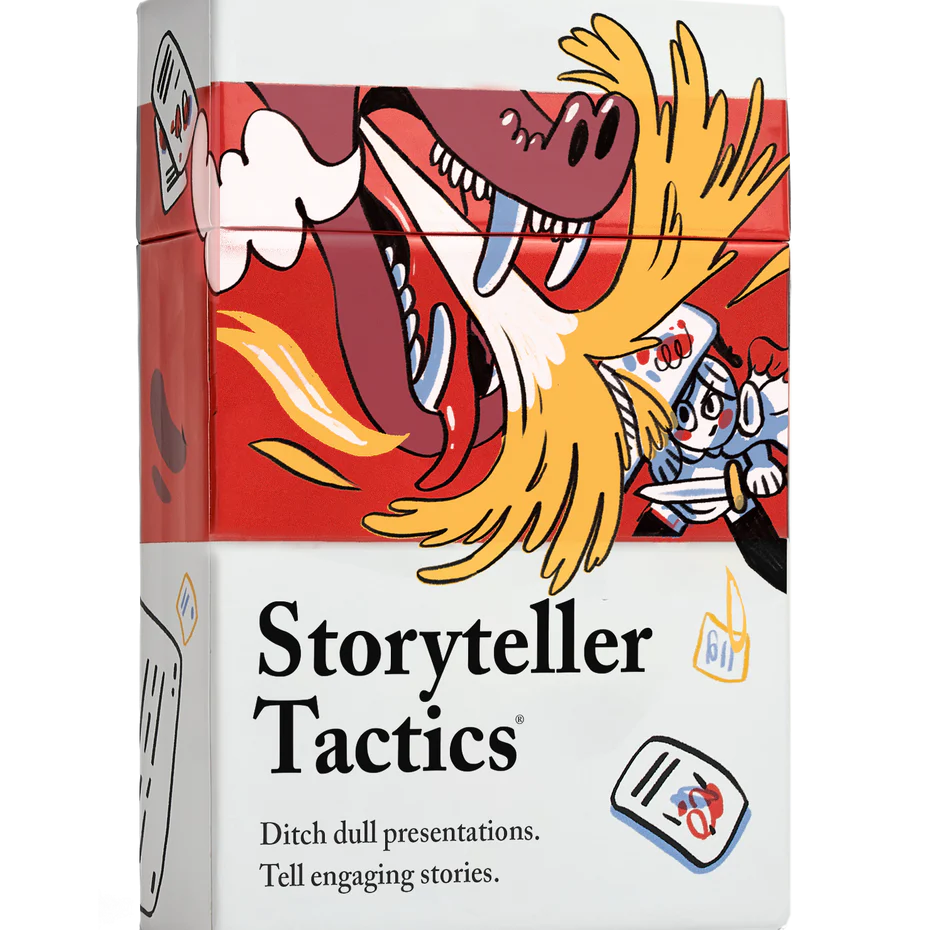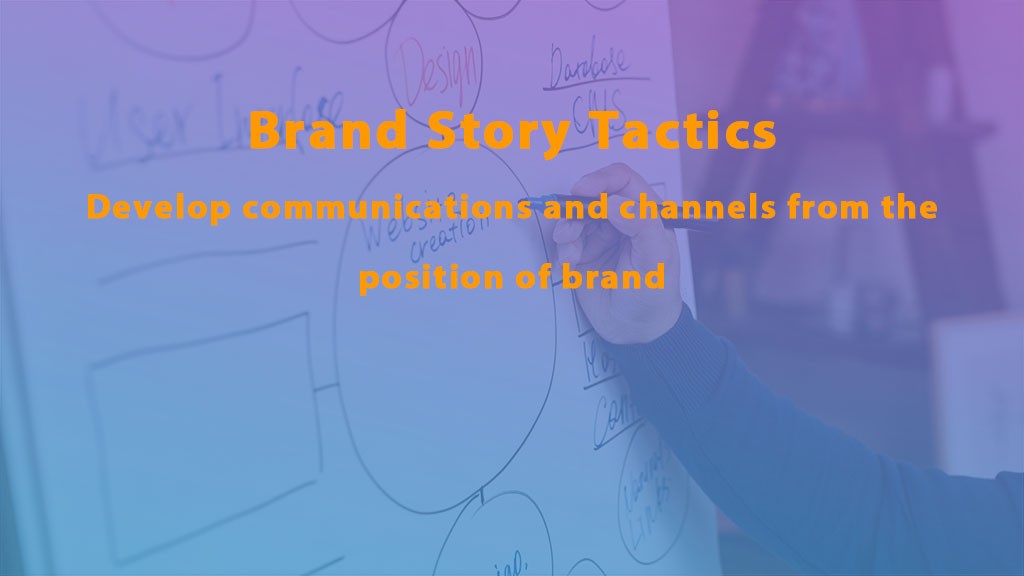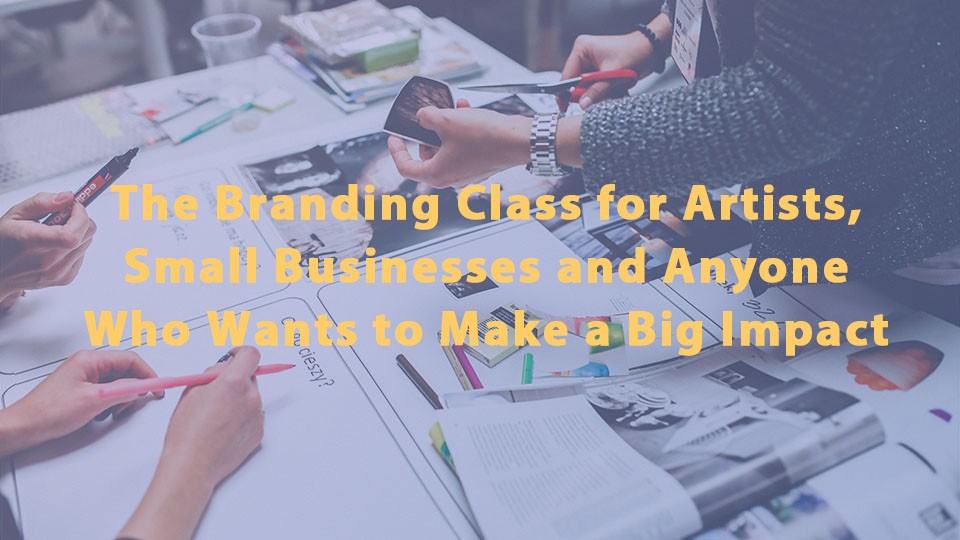Building Characters with Storyteller Archetypes
How do root characteristics influence character behaviors throughout a journey?
Last week Steve Rawling and I recorded a session talking about how to use storyteller archetypes to assess and develop characters in a few different scenarios. Steve is the author of Storyteller Tactics, a tool for creating better stories in business and life. He’s created an expansion pack called “Storyteller Tactics Archetypes.” You can use the two decks to inform any kind of story you are creating, from nonfiction documentaries to business pitches, brand advertising, and your next novel.
With the two decks, you are able to identify root character drives and conflicts that can drive the story forward. You can extrapolate attitudes, values, and behaviors from the archetypes that set the tone for your brand. The Archetypes deck comes with story arc cards that help you set your characters on a path, and the Storyteller Tactics deck provides the prompts to dig into the emotions of your characters, internal and external conflicts, the vision that can set them toward a goal, and the hard work that’s necessary to overcome challenges to get to the outcome.
Archetype Character Conflicts
Let’s talk about character conflicts. The archetype “the innocent” is in many ways the opposite of “the warrior.” The warrior has the skill, power, and cunning developed through training to decimate their opponent. The innocent has none of these. Instead, the innocent has openness, authenticity, hopes, wants, and needs. The warrior could trample the innocent, or the warrior could champion the innocent, protecting the character, and teaching the innocent skills that will empower survival in a world filled with challenges and pitfalls.
The innocent could win out over the warrior, as in the story of David and Goliath, or a corrupt warrior, the assassin, could soften and find a reason to care about others, as in The Professional, starring Jean Reno and Natalie Portman.
In our session, Steve and I talked through some real-life scenarios. I’ve assessed a number of environmental nonprofits and activists in terms of their communication strategies. We talked about Amazon Watch, Greta Thunberg, and Al Gore. Greta has traits that come from the innocent and rebel archetypes, but she can’t do it all on her own.
Archetype Character companions
World leaders are both a barrier and a necessary companion for activists. A character like Al Gore, who served notably as vice president to Bill Clinton, who created the nonprofit The Climate Reality Project, wrote a book and film “An Inconvenient Truth,” and has been an advisor to leaders, could be an important companion to someone like Greta.
Gore’s archetype is more like the sage and the ruler combined. You can see how innocent, rebel, sage, and ruler make for a powerful set of characters within the global challenge we are facing today.
Watch the video of Steve and I at the top of this article. It’s a great example of how to use the cards to tease out conflict. It also leaves the door open for some of the other archetypes to come in and play a pivotal role in moving ahead.
Creating Sub Archetypes
I mentioned that Greta and Al Gore are made up of more than one archetype. In fact, the philosophy that influenced archetypal assessment in storytelling came out of psychology. Carl Jung believed that we each carry the traits of all of the archetypes. Some are on the surface while others are submerged in our subconscious.
Storyteller Tactics has a card called “Three is the Magic Number.” Any more than three things on your agenda and something’s going to get left out, but three often feels just right. I like to do that with characters. Combining three archetypes together gives you enough dynamic range for your characters to have depth but not so much that they become confusing or start to self-destruct.
Each of the archetypes suggests a name for some archetypes that can emerge with a pairing. The ruler and sage, Al Gore’s profile could be the judge or lawmaker. Combine that with Artist and you might call his role “The Documentarian.” Combine it instead with the rebel and he might be “The Prophet.” I think a sub-archetype in this zone is getting pretty close.
Send Your Archetypes on a Journey
The Universal Stories card in the Storyteller Tactics deck is a great place to start your character journey. It frames stories from a variety of story drivers like right and wrong, rights of passage, and conflict and cooperation. Each story concept points to another card.
If we choose conflict and cooperation for our story on the environmental crisis, we can follow the prompt to the card “three great conflicts.” That card helps you explore internal conflicts, like human’s desire for fun, travel, and the things we want at the swipe of a credit card. We can explore conflicts with society, which can include the role of individuals and activists, leaders, and governments. We can also explore the struggle between humankind and its environment.
As we face more regional and international environmental crises, stories like The Log Project, an ongoing art project about the second most expensive wind storm to ever hit the United States, and Mia Feuer’s Totems of the Anthropocene, an art installation shown at the Figge Museum of Art become more significant.
We can choose our story arc as well. Are our characters on a path to downfall, or is this an opportunity for a fast innovation curve, wherein the world discovers new ways to create generative balance within our environment? The artist archetype could come into play in this story arc. The artist is more than a craftsperson. The archetype includes “the innovator” as a primary drive, and thus can include elements of the designer, the engineer, and the problem-solver.
One of the most powerful cards in the deck is titled “Man in a Hole.” Anytime a crisis seems impossible, this story scenario is a great place to start, but it’s not a story of impossibility. It’s a story of possibility. Often those who are stuck just need to look around to examine more closely their current environment to find and discover ways of getting out of the hole.
“Bright spots” are often smaller stories that demonstrate that you don’t fix a systemic problem by trying to eat the whole elephant all at once, but rather one bite at a time. A story crops up about using giant stones to prevent illegal trawlers from dragging the ocean floor. Another comes up about communities planting local flowers to strengthen the bee population. Another highlights how banks and investment firms are being held accountable for funding new oil development. Another addresses political work in the Amazon focused on protecting indigenous populations and the jungle.
Next steps for story architects
Are you trying to find the right story to support your organization? Get yourself Storyteller Tactics and Archetypes with 15% off your entire order from Pip Decks. Are you looking for an experienced storyteller to work with you on structuring your book, screenplay, social media, or speech? Schedule a consultation using the links below to discuss your characters, story arc, messaging pillars, key messages, and content strategy.
Want to deepen your ability to apply story tactics through your brand?
Sign up for Brand Story Tactics coaching to develop communications and channels from the position of brand.
Brand platforms tend to be developed, then slipped in a drawer or stored in a Dropbox folder but rarely used. Through one-on-one coaching, we will develop your communications platform and messaging keeping your brand position in mind. This a-la-carte option allows you to buy as many one-hour sessions as you need. In our first session, we will create an agenda and plot out a timeline for clarity and accountability on both sides.
Want to learn more about brand development?
In addition, increase your ability to create brand platforms and brand communications frameworks by taking my class: Brand Building to Create a Big Impact.
Stay Connected with Murdock Media Production!
If you like this content, subscribe to our YouTube channel for more on story archetypes, brand storytelling, and brand development.
And drop me a line with the form below to let me know how your brand building is going. I look forward to seeing how you discover your brand and go with your audience on your own unique journey.

